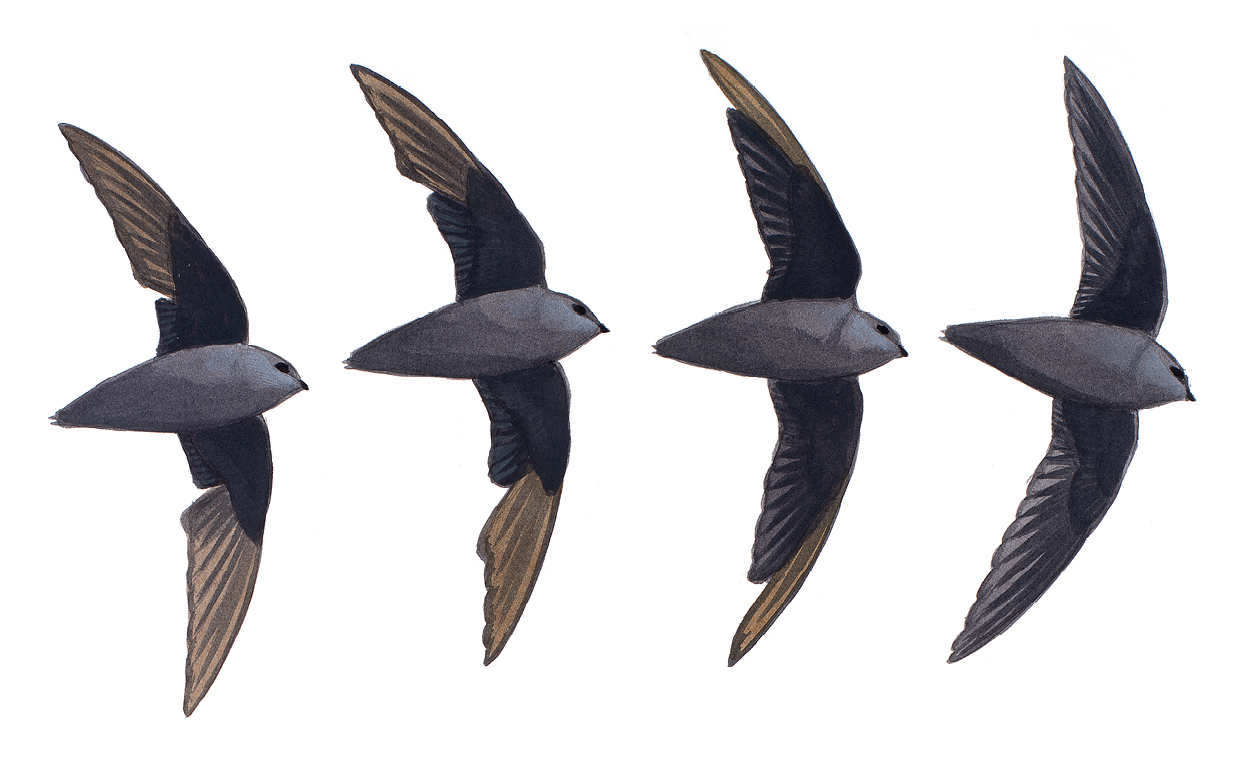Swifts

A Chimney Swift high above the earth
Some species of swifts stay in the air continuously for ten months each year.

A Chimney Swift high above the earth
Some species of swifts stay in the air continuously for ten months each year.
■ Flight is critical to most birds’ survival. This is especially true for swifts, whose large wing feathers have to be in good condition. This means replacing those feathers once a year, but how can they keep flying while growing new wing feathers? Most birds replace their feathers gradually. By growing only one or two feathers at a time, the neighboring feathers overlap enough to cover most of the gap and maintain a functional wing. The next feather won’t drop until the growing feather is long enough to fill in, so there is never more than a small gap, and flight is not significantly hindered. It can take more than three months for a Chimney Swift to complete the molt of all of its flight feathers. (See this page.)

A Chimney Swift, showing the progression of new feathers (shown slightly darker) replacing old feathers, beginning with the inner feathers and moving gradually to the tip of the wing
■ The wing structure of swifts is distinctly different from that of most other birds, with much shorter “arm” bones, so that almost all of their wing surface is created by long feathers growing from the “hand” bones. In this respect, they are similar to hummingbirds, but of course the flight style is very different. The Ring-billed Gull shown here in comparison is a relatively long-armed species. This allows them to dramatically change the shape of their wings to adjust to changing conditions, simply by adjusting the angles of the wing bones. Swifts have a very limited range of possible wing shapes, and generally fly straight and very fast, which is one reason why they usually stay high in the open air.

A Chimney Swift and a Ring-billed Gull (not to scale), with arm bones shown in blue and hand bones in red
■ The closest most of us will ever get to seeing a swift perched is watching one drop into a chimney to roost. Swifts are supremely adapted to life in the sky. Their stiff, narrow wings are very efficient for high-speed travel in a straight line, but make low-speed maneuvering more difficult. Swifts have high wing-loading–high body weight relative to the surface area of their wings. To generate enough lift for flight, they must travel at high speed to increase the airflow across their relatively small wings. Gulls have lower wing-loading and their relatively large wings generate plenty of lift at lower speeds, so they appear to float effortlessly in the air. When it’s time for swifts to go to roost inside a chimney they approach at high speed, stall directly over the opening, and awkwardly flutter straight down into the chimney.

Chimney Swifts dropping into a chimney